Exercise
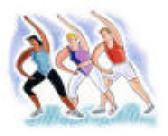 The following article is a small excerpt from one of my books. I hope you’ll want to learn more and let me help you to get into the best shape of your life.
The following article is a small excerpt from one of my books. I hope you’ll want to learn more and let me help you to get into the best shape of your life.
When you exercise, you breath heavier and faster, your heart beats faster, your muscles hurt and you sweat. These are all normal responses to exercise and your body has an incredibly complex set of processes to meet the demands of working muscles. Every system in your body is involved.
Any type of exercise uses different muscle groups to generate motion. In running and swimming, your muscles are working to accelerate your body and keep it moving. In weightlifting, your muscles are working to move a weight. Exercise means muscle activity!
In strenuous exercise, just about every system in your body either focuses its efforts on helping your muscles do their work, or it shuts down. Your heart beats faster during strenuous exercise so that it can pump more blood to your muscles, and your stomach shuts down during strenuous exercise so that it does not waste energy your muscles can use.
When you exercise, your muscles act something like electric motors. Your muscles take in a source of energy and they use it to generate force. An electric motor uses electricity to supply its energy. Your muscles are biochemical motors, and they use a chemical called adenosine triphosphate (ATP) for their energy source. During the process of “burning” ATP, your muscles need three things:
- They need oxygen, because chemical reactions require ATP and oxygen is consumed to produce ATP.
- They need to eliminate metabolic wastes (carbon dioxide, lactic acid) that the chemical reactions generate.
- They need to get rid of heat.
In order to continue exercising, your muscles must continuously make ATP. To make this happen, your body must supply oxygen to the muscles and eliminate the waste products and heat. If these needs are not met, then you become exhausted and you won’t be able to keep going.
ATP is required for the biochemical reactions involved in any muscle contraction. As the work of the muscle increases, more and more ATP gets consumed and must be replaced in order for the muscle to keep moving.
Because ATP is so important, the body has several different systems to create ATP. These systems work together in phases. The interesting thing is that different forms of exercise use different systems, so a sprinter is getting ATP in a completely different way from a marathon runner!
ATP comes from three different biochemical systems in the muscle, in this order:
- Phosphagen system
- Glycogen-lactic acid system
- Aerobic respiration
A muscle cell has some amount of ATP floating around that it can use immediately, but not very much, only enough to last for about three to 10 seconds. To replenish the ATP levels quickly, muscle cells contain a high-energy phosphate compound called creatine phosphate. The phosphate group is removed from creatine phosphate by an enzyme called creatine kinase, and is transferred to ADP to form ATP. The cell turns ATP into ADP, and the phosphagen rapidly turns the ADP back into ATP. As the muscle continues to work, the creatine phosphate levels begin to decrease. Together, the ATP levels and creatine phosphate levels are called the phosphagen system. The phosphagen system can supply the energy needs of working muscle at a high rate, but for no more then10 seconds.
Muscles also have big reserves of a complex carbohydrate called glycogen. Glycogen is a chain of glucose molecules. A cell splits glycogen into glucose. Then the cell uses anaerobic metabolism (anaerobic means “without oxygen”) to make ATP and a by product called lactic acid from the glucose. About 12 chemical reactions take place to make ATP under this process, so it supplies ATP at a slower rate than the phosphagen system. The system can still act rapidly and produce enough ATP to last about 90 seconds. This system does not need oxygen, which is handy because it takes the heart and lungs some time to get their act together. There is a definite limit to anerobic respiration because of the lactic acid. The acid is what makes your muscles hurt. Lactic acid builds up in the muscle tissue and causes the fatigue and soreness you feel in your exercising muscles.
By two-three minutes of exercise your body responds to supply working muscles with oxygen. When oxygen is present, glucose can be completely broken down into carbon dioxide and water in a process called aerobic respiration. Aerobic respiration can also use fatty acids from fat reserves in muscle and your body to produce ATP. In extreme cases (like starvation), proteins can also be broken down into amino acids and used to make ATP. Aerobic respiration would use carbohydrates first, then fats and finally proteins. Aerobic respiration takes even more chemical reactions to produce ATP than either of the above systems. Aerobic respiration produces ATP at the slowest rate of the three systems, but it can continue to supply ATP for several hours or longer, so long as the fuel supply lasts.
When you start to look closely at how your body works, it is truly an amazing machine! (Training smart)
If you are going to be exercising for more than a couple of minutes, your body needs to get oxygen to the muscles or your muscles will stop working. Just how much oxygen your muscles will use depends on two processes: getting blood to the muscles and extracting oxygen from the blood into the muscle tissue. Your working muscles can take oxygen out of your blood three times better then when your muscles are resting. Your body can increase the flow of oxygen-rich blood to working muscle by;
- Increasing the local blood flow to the working muscle
- By diverting the blood flow from nonessential organs to your working muscles
- By increasing the flow of blood from your heart
- By increasing the rate and depth of your breathing
These mechanisms can increase the blood flow to your working muscle by almost five times. That means that the amount of oxygen available to the working muscle can be increased by almost 15 times!
When you exercise, your blood vessels in your muscles dilate and the blood flow is greater. Your body has an interesting way of making those vessels expand. As ATP gets used up in working muscle, the muscle produces several metabolic by products (such as adenosine, hydrogen ions and carbon dioxide). These by products leave your muscle cells and cause your capillaries (small, thin-walled blood vessels) within the muscle to expand or dilate. The increased blood flow delivers more oxygenated blood to the working muscle.
When you begin to exercise, a remarkable diversion happens. Blood that would have gone to your stomach or kidneys goes instead to your muscles. This helps increase the delivery of oxygenated blood to your working muscles.
Your heart, which is also a muscle, gets a workout during exercise, and its job is to get more blood out to your body’s hard-working muscles. Your heart’s blood flow increases by about four or five times from that of its resting state. Your body does this by increasing the rate of your heartbeat and the amount of blood that comes through the heart and goes out to the rest of your body. The rate of blood pumped by the heart (cardiac output) is a product of the rate at which your heart beats (heart rate) and the volume of blood that the heart ejects with each beat (stroke volume). In a resting heart, the cardiac output is about 5 litres a minute (0.07 L x 70 beats/min = 4.9 L/min). As you begin to exercise and your heart is pumping at full force, the cardiac output is about 20-25 litres per minute.
As your heart gets more blood to your working muscles your lungs and the rest of your respiratory system need to provide more oxygen for the blood. As your lungs absorb more oxygen and the blood flow to the muscles increases, your muscles have more oxygen.
Now that you have increased the flow of oxygen-rich blood to your muscles, your muscles need to get the oxygen out of the blood. An exchange of oxygen and carbon dioxide is the key to this. A protein called hemoglobin, which is found in red blood cells, carries most of the oxygen in the blood. Hemoglobin can bind oxygen and/or carbon dioxide; the amount of oxygen bound to hemoglobin is determined by the oxygen concentration, carbon dioxide concentration and pH. Normally, hemoglobin works like this:
- Hemoglobin in red blood cells entering the lungs has carbon dioxide bound to it.
- In the lungs, oxygen concentration is high and carbon dioxide concentration is low due to breathing.
- Hemoglobin binds oxygen and releases carbon dioxide.
- Hemoglobin gets transported through the heart and blood vessels to the muscle.
- In muscle, the carbon dioxide concentration is high and the oxygen concentration is low due to metabolism.
- Hemoglobin releases oxygen and binds carbon dioxide.
- Hemoglobin gets transported back to the lungs and the cycle repeats.
As you exercise your metabolic activity is high, more acids (hydrogen ions, lactic acid) are produced and the local pH is lower than normal. The low pH reduces the attraction between oxygen and hemoglobin and causes the hemoglobin to release more oxygen than usual. This increases the oxygen delivered to your muscles.
While you exercise your body is using energy and producing waste, such as lactic acid, carbon dioxide, adenosine and hydrogen ions. Your muscles need to get rid of these wastes in order to continue to exercise. The extra blood that is flowing to your muscles and bringing more oxygen can also take this waste away.
Your body heats up when you exercise, and you sweat. The sweat evaporates from your skin, removing heat and cooling your body. Evaporation of sweat removes fluid from the body, so it is important to maintain fluids for blood flow and sweat production by drinking water and/or sport drinks. Sports drinks also replace ions (sodium, potassium) that are lost in the sweat, and provide additional glucose to fuel anaerobic and aerobic respiration.
Evaporation of sweat is an important cooling system that can efficiently remove heat. However, if exercise is done in a hot, humid environment, then sweat does not evaporate. This reduces the efficiency of this system and you may be subject to heat stroke, which is a life-threatening condition. (Your core body temperature rises to 40 degrees C or 104 degrees F) You can avoid getting heat stroke by wearing shorts and other loose clothing, drinking plenty of water and exercising in cool weather (below 82 degrees F or 28 degrees C).
If you exercise regularly or if you are an athlete in training, you are trying to make your muscles work better. Three major factors in muscle performance are strength, power and endurance.
Muscle strength is the maximal force that your muscle can develop. Strength is directly related to the size of the muscle. Muscle fibres are capable of developing a maximal force of 3 to 4 kg/cm2 (average = 3.5 kg/cm2) of muscle area. So, let’s say that you have increased your muscle size from 100 to 150 cm2, then the maximal resistance that you could lift could be increased from 350 kg (770 lb) to 525 kg (1,155 lb).
The power of muscle contraction is how fast the muscle can develop its maximum strength. Muscle power depends on strength and speed [power = (force x distance)/time]. A person can have extreme power from muscles (7,000 kg-m/min) for a short period of time (about 10 seconds) and then power reduces by 75 percent within 30 minutes; this aspect is important for sprinters because it gives them great acceleration.
Muscle endurance is the capacity to generate or sustain maximal force repeatedly.
Strength, power and endurance may be due in part to the distribution of two basic types of fibers, fast twitch and slow twitch. Fast-twitch fibers are capable of developing greater forces and contracting faster and have greater anaerobic capacity. In contrast, slow-twitch fibers develop force slowly, can maintain contractions longer and have higher aerobic capacity. Your genes largely determine whether you have more of one kind of muscle fiber or another. Sprinters tend to have more fast twitch fibers. Marathon runners tend to have more slow twitch fibers.
You can help your body to exercise better by eating the right foods. If you want to do well, you should try to increase the stores of glycogen in your liver and your muscles. Athletes eat solid, high-carbohydrate diets (breads, pasta) the night before competition, and liquid, high-glucose diets in the morning before competition. Sports drinks containing glucose are good to drink during competition to replace fluid and help to maintain your blood glucose levels.
I know you want to get in shape and look great. Whatever your fitness goal…to slim down…gain muscle…tone your arms or flatten your tummy…I’m here to help you accomplish your goals and to improve your fitness level. If you have enjoyed this article and the many other free features on my site, and would like some more comprehensive information such as fitness books and CD’s to aid you in achieving your health and fitness goals, please visit myONLINE STORE where you will find innovative natural health and beauty products to help you become the BEST YOU CAN BE !


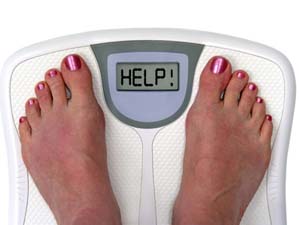 The following article is a small excerpt from one of my books. I hope you’ll want to learn more and let me help you to get into the best shape of your life.
The following article is a small excerpt from one of my books. I hope you’ll want to learn more and let me help you to get into the best shape of your life. The following article is a small excerpt from one of my books. I hope you’ll want to learn more and let me help you to get into the best shape of your life.
The following article is a small excerpt from one of my books. I hope you’ll want to learn more and let me help you to get into the best shape of your life. I hope you’ll want to learn more and let me help you to get into the best shape of your life and listen to my
I hope you’ll want to learn more and let me help you to get into the best shape of your life and listen to my  The following article is a small excerpt from one of my books. I hope you’ll want to learn more and let me help you to get into the best shape of your life.
The following article is a small excerpt from one of my books. I hope you’ll want to learn more and let me help you to get into the best shape of your life. I hope you’ll want to learn more and let me help you to get into the best shape of your life.
I hope you’ll want to learn more and let me help you to get into the best shape of your life.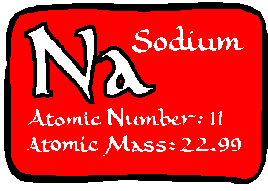 The following article is a small excerpt from one of my books. I hope you’ll want to learn more and let me help you to get into the best shape of your life.
The following article is a small excerpt from one of my books. I hope you’ll want to learn more and let me help you to get into the best shape of your life.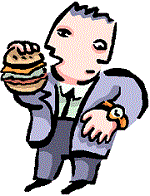 The following article is a small excerpt from one of my books. I hope you’ll want to learn more and let me help you to get into the best shape of your life.
The following article is a small excerpt from one of my books. I hope you’ll want to learn more and let me help you to get into the best shape of your life.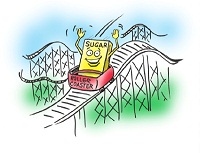 I hope you’ll want to learn more and let me help you to get into the best shape ofyour life.
I hope you’ll want to learn more and let me help you to get into the best shape ofyour life.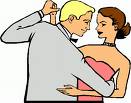 I hope you’ll want to learn more and let me help you to get into the best shape of your life.
I hope you’ll want to learn more and let me help you to get into the best shape of your life.